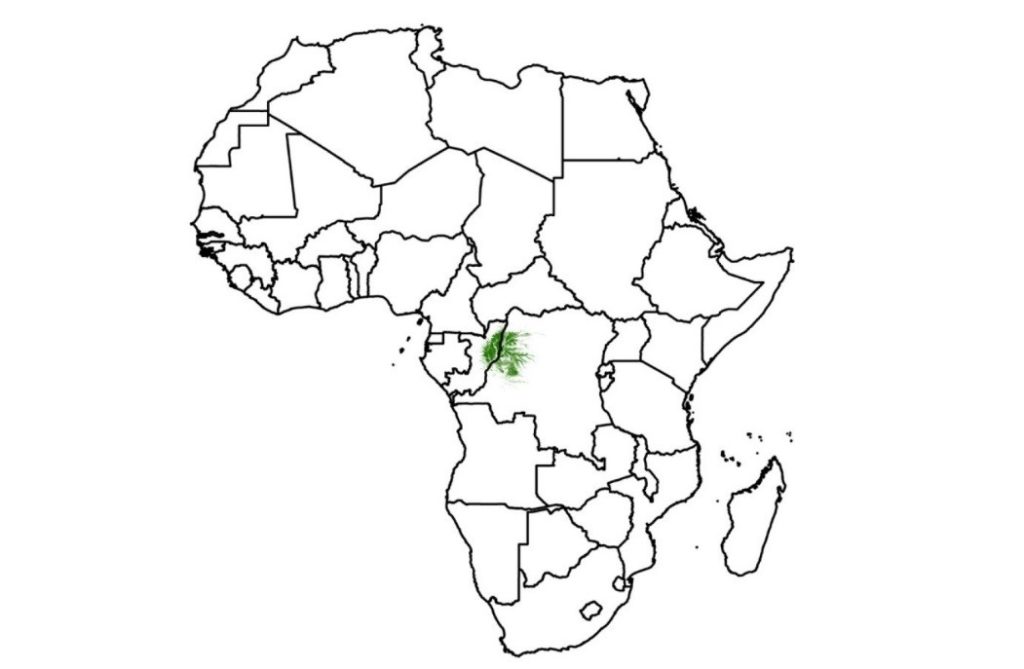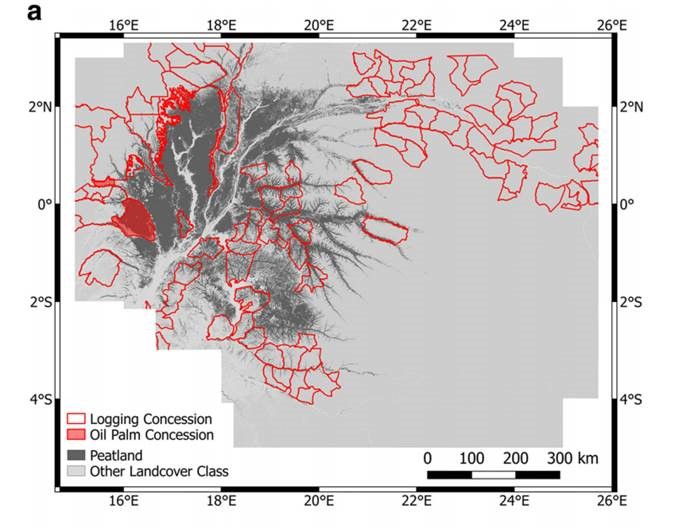A COP26 briefing from the CongoPeat international team of scientists

Simon L. Lewis1,2, Corneille Ewango3 , Ifo Suspense Averti4 , Greta C. Dargie1 & the CongoPeat consortium5
GLOBAL IMPORTANCE OF THE PEATLANDS
- In 2017 we revealed that the world’s largest tropical peatland is in the central Congo Basin. New data, presented at COP26 for the first time, shows that peat covers 16.5 million hectares, 11.1 million hectares in Democratic Republic of the Congo, and 5.4 million hectares in Republic of the Congo. The total area is larger than England, and 14% greater than our first map.
- Our new data also shows that these peatlands are among the world’s oldest, with some locations beginning peat accumulation 42,000 years ago. They develop slowly, reaching a depth of up to 6 meters today.
- The Central Congo Basin peatlands are among the most carbon dense ecosystems on Earth, storing 31.5 billion tonnes of carbon. Covering just 5% of the Congo Basin, the carbon stored in peat is the same as the carbon stored in all the trees in the entire Congo rainforest.
- Some other tropical peatlands have become a major source of carbon due to drainage for agriculture and fire, large enough to be detectable in the historical record of atmospheric CO2. If the Congo Basin peatlands suffered the same fate, this could threaten international targets to limit global warming to 1.5°C.
- The swamp forests that overlie the peat are some of the world’s richest forests for wildlife. Major populations of forest elephants, lowland gorillas, bonobos, chimpanzees, Allen’s swamp monkey and the African dwarf crocodile are found there.

MANAGING THE CENTRAL CONGO PEATLANDS
- The peatlands appear to be largely intact, with people using them sustainably, with no evidence of peat fires or large-scale land-use change. However, baseline studies are needed to understand how people currently utilize the peatlands.
- Biodiversity studies do not exist for most groups, including fish, the main source of protein in the region. These are needed to guide management.
- Oil exploration, logging and industrial oil palm all threaten the region. If forest is cleared and drained, peat carbon would be rapidly released to the atmosphere. In other tropical peatlands, where extensive land-use change has occurred, severe forest fires and resulting human health problems have subsequently led to new legislation and expensive programs to restore the peatlands. This scenario should be avoided.
- The stored carbon in the central Congo peatlands is vulnerable to climate change. Peat must remain wet to maintain its carbon: if dry season rainfall decreases as some models suggest, it could trigger the release of billions of tonnes of carbon over a few decades. Urgent research is needed to understand how close the peatlands are to this threshold that would accelerate climate change.
- New economic models and forest governance mechanisms are needed to protect the valuable services these peatlands provide. These should keep the peatlands wet, increase local peoples’ incomes and local and national government revenues, and maintain the swamp forests that house biodiversity and feed carbon into the peatlands from the atmosphere.

For more information, join our COP26 event and drinks reception.
Watch the newly released video preview for our COP26 event.
Download the briefing as a PDF.
1University of Leeds 2University College London 3University of Kisangani 4University Marien N’GOUABI 5Andrew Baird, Richard Betts, George Biddulph, Arnoud Boom, Peter Cook, Bart Crezee, Ian Davenport, Selena Georgiou, Nicholas Girkin, Charles Hackforth, Donna Hawthorne, Shona Jenkins, Jonay Jovani Sancho, Joseph Kanyama, Ian Lawson, Emmanuel Mampouya, Mackline Mbemba, Lera Miles, Edward Mitchard, Paul Morris, Susan Page, Sofie Sjögersten, Dylan Young.
